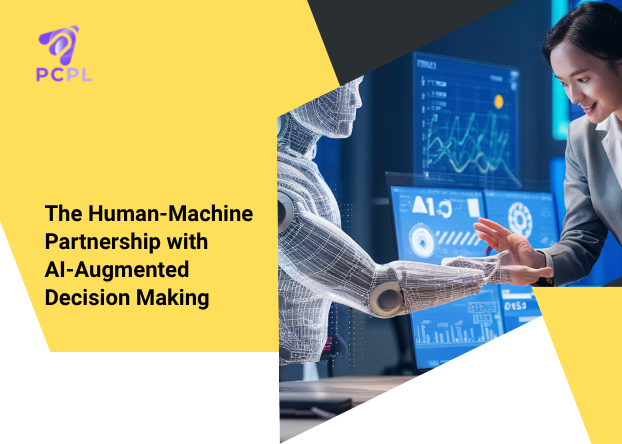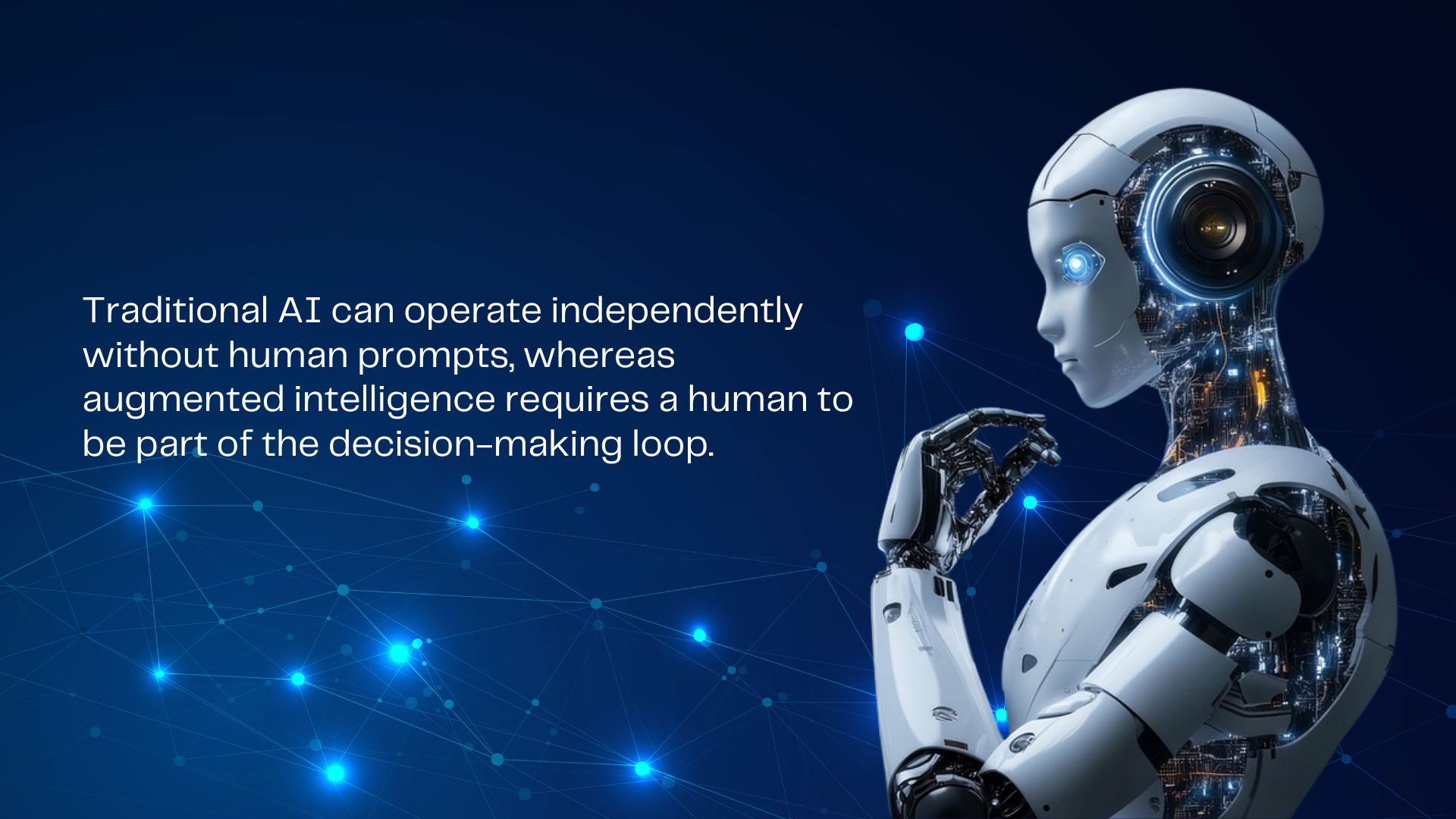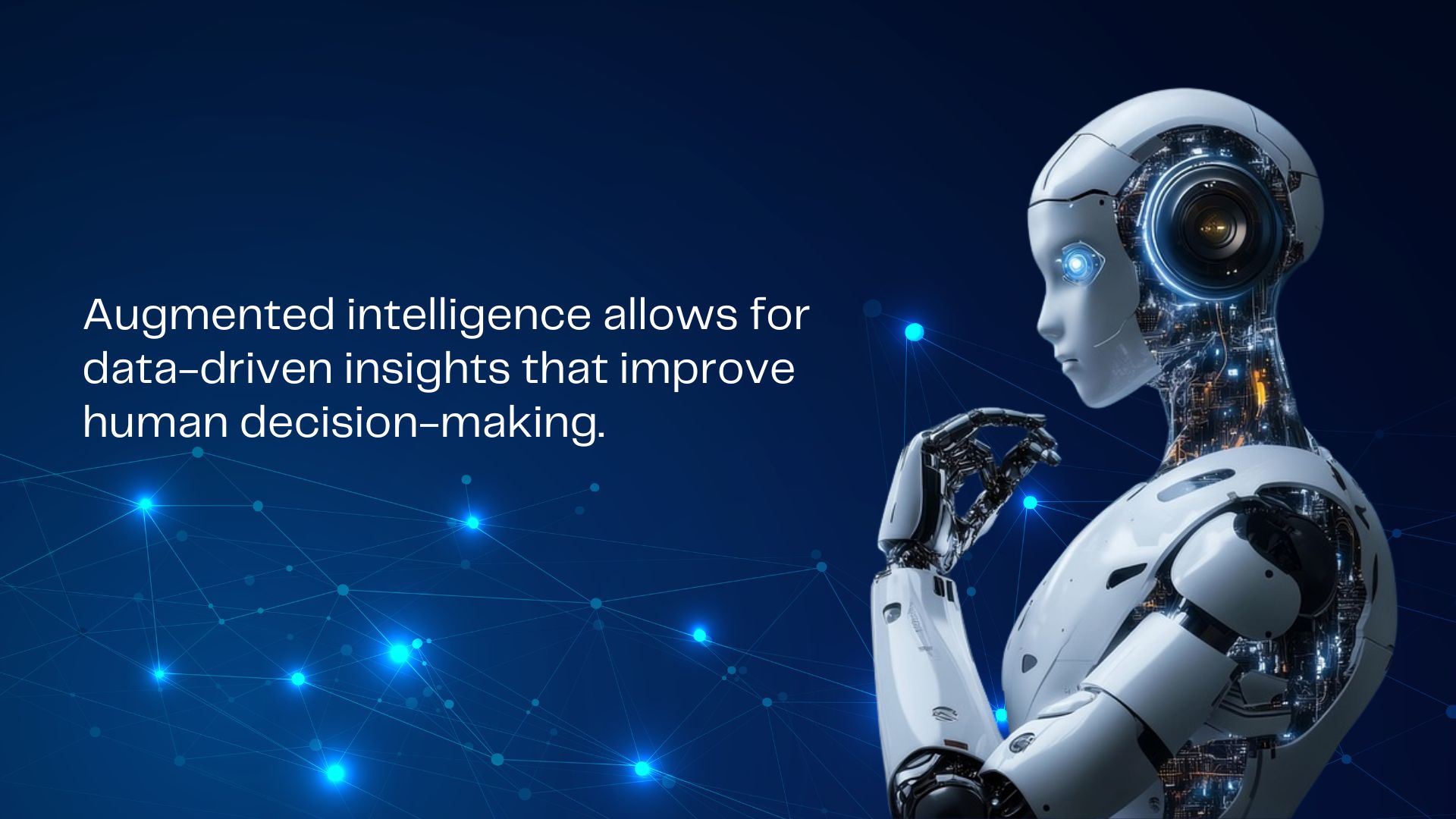
The Human-Machine Partnership with AI-Augmented Decision Making
Hearing concerns about artificial intelligence (AI) and the possibility of autonomous robots replacing jobs is quite a common thing today.
But what is AI truly capable of?

In fact, the most common use of AI in the workplace will be augmented intelligence, also known as human-centered AI or AI-human collaboration. This approach enhances human capabilities rather than taking over tasks entirely.
What Is Augmented Intelligence?
Augmented intelligence is a specialized form of AI that keeps humans central to the workflow. It merges technologies like machine learning and deep learning with human judgment to support better, more informed decisions. The goal is to enhance the capabilities of human workers, not to replace them.
For example, virtual assistants like Siri or Alexa are a form of augmented intelligence. They don’t make decisions on their own, they provide information when you ask for it. When your hands are messy from baking, it’s much easier to ask Alexa for the next step in a recipe than to scroll through your phone.
How is it different from traditional AI?
The main difference is autonomy.

How Augmented Intelligence Works
Augmented intelligence creates a powerful partnership between human intelligence and machine learning. This collaboration depends on the following components
- Machine Learning (ML)– This allows the AI system to learn and improve from experience without needing to be explicitly reprogrammed.
- Natural Language Processing (NLP)– This technology enables the AI to understand and interpret human language.
- Deep Learning– This process mimics how the human brain processes data and identifies patterns.
- Human Input– This is the most important element where humans use their judgment to make decisions and confirm that the technology has performed its function correctly.
This combination of machine and human abilities creates a “digital worker” that can handle specific tasks while humans oversee the process and manage any exceptions.
How AI Powers Augmented Intelligence
AI collaborates with human intelligence to achieve shared goals. The AI handles massive amounts of data, extracts key information, and presents it to a person, who then makes a final decision.
- Intelligent Automation (IA)– This combines robotic process automation (RPA), AI, and other technologies to streamline business processes. These “digital workers” can operate independently or alongside people.
- Generative AI– Humans can provide prompts to generative AI tools, which use large language models (LLMs) to create entirely new content, such as text or images.
- Specialized AI– This type of AI focuses on a single task or function, making it a perfect fit for augmented intelligence since it enhances a specific part of a human’s job.
Use Cases for Augmented Intelligence
Augmented intelligence is very adaptable and can be applied across many different situations and industries.
- Online Retail– AI analyzes customer data to predict preferences, while a person uses this information to create personalized marketing suggestions.
- Healthcare– AI scans medical images like X-rays to detect abnormalities, and a clinician uses those findings to make a final diagnosis.
- Manufacturing– AI predicts when a machine will need maintenance, and a human oversees the repair process.
- Financial Services– AI identifies patterns of potential fraud in transaction data, allowing human analysts to focus their efforts on complex or high-risk cases.
- Customer Service– AI-powered chatbots handle routine customer questions, while a human agent takes over more complicated issues with full context.
- HR Recruitment– AI screens resumes to find the most qualified candidates, then an HR professional makes the final hiring decision after interviews.
The Risks and Rewards of Augmented Intelligence

AI can process huge amounts of data in real time, minimizing human factors like bias, fatigue, and distraction.
But, it’s important to remember that AI is not perfect. The people who create these algorithms may unintentionally introduce their own biases, which can impact outcomes. Before implementing any AI system, it is important to establish clear guidelines and best practices.
Enhance Your Workforce with Human-Machine Collaboration
Augmented intelligence is a powerful form of AI that focuses on collaborating with humans and machines. It improves decision-making by using AI for tasks like data analysis and pattern recognition, while relying on human judgment for crucial, context-driven choices.
Instead of replacing human jobs, augmented intelligence supports and enhances them. Businesses can streamline operations and create a better work environment for their employees by combining human insight with the data capabilities of AI.
Connect with us to implement secure and intelligent AI in your organization.
References
https://www.linkedin.com/pulse/beyond-ai-how-augmented-intelligence-redefining-human-machine-1iwif/
